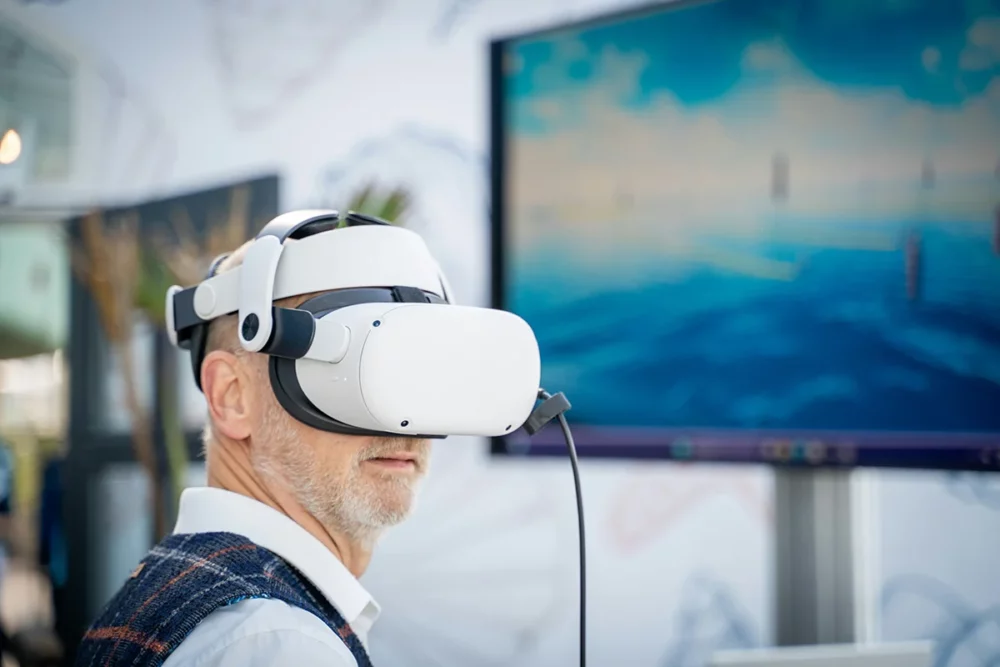Gamification in the Workplace: Getting Results the Fun Way

Gamification. Does it sound complicated? Don’t be confused! The words may evoke technology and the world of gaming but it’s actually a simple and effective tool that is changing the way companies train their employees, search for new talents and build team spirit.
The game elements, such as points, missions, badges or competitions, can turn routine business processes into an interactive experience. Not only that – gamification is based on research and data that show its impact on motivation, learning and retention.
How does gamification work? Why is it so effective and how to implement it effectively?
Why should gamification be on your radar?
The definition of gamification could be explained as the use of game principles in a non-game context. Its magic lies in the fact that it combines a natural human desire for competition, reward and sense of achievement with everyday work processes. What’s the result? Fun and mainly effective tool that can increase efficiency of education, recruitment process and boost employee motivation. Although gamification affects everyone in the company, it most often impacts on HR processes. Gamification in HR is really important so HR should be open to it and become its ambassador.
Psychology of gamification: Why does it work better than traditional methods?
The effectiveness of gamification is based on firm psychological basis. Let’s have a look at the most important ones:
- Forgetting curve: people forget up to 70% of information within 24 hours. Gamification solves this problem through repetition and active engagement. The result is up to 20% better retention.
- Dopamine: game rewards, such as points or badges, activate the hormone of happiness which increases motivation to keep going.
- Flow: gamification helps employees achieve a state of deep concentration which increases productivity and creativity.
- Self-determination: supports key motivators – autonomy, competence and solidarity – that naturally drive employees to better performance.
Gamification in education: How to turn training into experience
Training doesn’t have to be boring – by using gamification, it turns into interactive experience. The game elements, such as points, missions or badges, increase employee engagement and learning efficiency while helping to retain up to 20% more information. Rather than passively watching presentations, the employees solve challenges, simulate real-life situations and optimise processes to improve communication skills, creative thinking and cooperation. So, gamification is definitely on the spot within in-company trainings.
Where does gamification work best?
Gamification can be applied in onboarding trainings that make it easier for newcomers to understand the processes. It changes boring compliance training such as OHS or GDPR and makes key information more attractive and memorable. It also significantly helps with soft skills, e.g. communication, teamwork or technical knowledge and analytical skills.
Why is gamification so effective?
Gamification engages emotions, arouses competition and provides immediate feedback. Thanks to the interactive elements, the employees actively learn and retain new information better than with traditional methods. Moreover, simulations and practical tasks allow them to try new approaches without the risk of real-world consequences.
Gamification and recruitment: Interactive recruitment
Gamification brings fresh approach to recruitment that not only attracts candidates but also reveals their real skills. How does it work? The candidates can solve the tasks that simulate their future job, complete viral mission or compete in a point system, which motivates them to perform better and be more involved.
For example, Google uses interactive tests such as “FooBar Challenge” – a hidden programming challenge. PwC created an online game Multipoly which simulates a real work environment and tests candidates’ analytical and business skills.
However, gamification in recruitment is most often used within Assessment centres and various model situations, i.e. role plays. The candidates solve team tasks or simulated situations, such as communication with customers or crisis management. These activities reveal key skills, e.g. communication, teamwork or decision making and provide recruiters with valuable information about candidates’ abilities in practice.
The use of gamification in day-to-day business operations
Gamification in the daily operation of the companies brings a new dimension of motivation that improves employee loyalty and engagement, and turns a working day into an experience. Instead of routine tasks, it focuses on changing them into meaningful challenges that encourage proactivity and performance improvement. How to apply it?
Examples of internal gamification:
- Innovation support: Competitions for the best process or product improvement proposals boost creativity and involve the employees in company strategy.
- Internal cooperation: Team challenges to solve internal processes more efficiently strengthen cooperation and motivate to get better results.
- Sales targets: Competition between sales teams to meet sales goals brings greater motivation through attractive rewards, such as benefits or vouchers.
How to reward?
Rewards are the key to a successful gamification. In order to achieve the targets, the employees can get cash bonuses, gift cards or education allowance. Material rewards, such as technological gadgets or company merchandise, are also often popular. Benefits in the form of extra days off, wellness programmes or experience vouchers are important as well. Career benefits, for example get the credit at company meetings or involvement in interesting projects, increase motivation and loyalty.
Gamification in teambuilding: How to build relationships and skills
Teambuilding strengthens the employee relationships, cooperation and skills such as problem solving. Gamification adds a fun dimension that engages participants and makes activities more meaningful. Indoor activities, e.g. escape room, develop strategic thinking, while LEGO® SERIOUS PLAY® supports finding creative solutions to company challenges. Outdoor challenges, such as assault course or survival simulations, build trust and cooperation in challenging situations.
Challenges of implementing gamification: How to overcome them and what you can get
Gamification provides companies with innovative ways to motivate the employees, improve cooperation and increase efficiency. Still, the implementation can run up against obstacles. However, with the right approach and clear communication, you can overcome these challenges.
Employee resistance: “This is not for me.”
Some employees may feel that games shouldn’t be meant for the workplace or worry that gamification will be unnecessarily time-consuming. Common objections are: “I don’t have time.” or “I’m not a gamer, I’m not interested in it.”. However, these concerns can be easily dispelled by clear benefits communication. Gamification increases involvement, supports creativity and makes learning easier in a funny way. For example, a TalentLMS study shows that 83% of the employees feel more motivated as a result of gamification. Start in a simple way, maybe with interactive quizzes or smaller challenges that draw the employees into the process and don’t disrupt their daily routine.
Distrust of management: Is it worth it?
Managers are often hesitant about the idea whether gamification is serious enough or whether the investment is worthwhile. The implementation includes the development of interactive content, e.g. simulations or gaming missions, and potential platform licensing fees. However, the initial costs are outweighed by the significant benefits. The Corporate Learning Network study states that gamification increases employee engagement by 72% and according to the Gartner, it’s considered to be an effective learning tool by 95% of managers. It supports cooperation, improves company culture and reduces turnover. In order to convince management, it’s recommended to start with a small pilot project, for example gamification of compliance training, which produces fast and measurable results.
Technological complexity: How to start easily?
Advanced simulations or VR games can be expensive but gamification doesn’t have to be. The tools like Kahoot, Quizizz or Twine offer affordable solutions for interactive quizzes and story games, often for free or just for a low fee. What’s more, gamification can be introduced offline through team challenges and simulations that encourage cooperation and creativity.
Why gamification works: Data and analysis
Gamification produces measurable results that confirm its effectiveness. Interactive learning increases knowledge retention by 20% while 83% of the employees report that gamification makes them feel more engaged. According to the Corporate Learning Network, thanks to gamification, 72% of the employees work more efficiently. Gartner found out that it’s considered to be an effective learning tool by 95% of managers. This data clearly shows that gamification, when implemented correctly, has a positive impact on team performance and motivation.
It isn’t just about games – it’ the tool that changes the workplace and delivers tangible results. It helps build engaged, motivated and effectively working teams, not only through simple challenges but also advanced simulations. Due to rapid technological advances and natural response of younger generations to interactive activities, gamification has a bright future. Trainings, recruitment or teambuilding – it brings innovation that is worthwhile. Are you ready to play?





